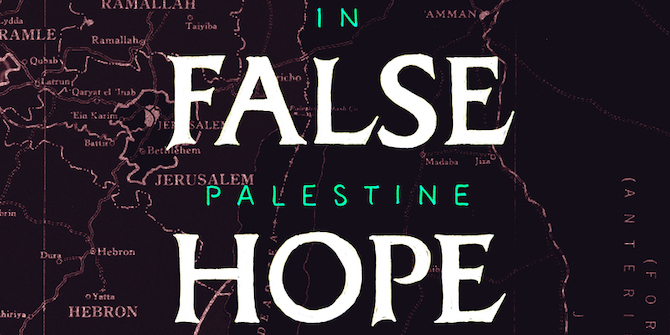by Ali M. Kassem

In February 2018, an envoy from the International Monetary Fund visited Lebanon, a small Mediterranean confessional democracy of around 5 million inhabitants. Barely surviving, and housing over 17 official religious sects, it is now ‘host’ to an estimated 1 million Syrian refugees. The IMF’s concluding statement was gloomy: warning that the nation’s debt could reach 180 percent of its GDP by 2023 and linking the turmoil to the region’s political crisis, including the war in Syria.
While Lebanon was once referred to as Switzerland of the East, and Beirut as Paris of the East, the country’s past must not be seen as one of flourishing prosperity which went off-course. It was never on-course. True, a few years after the declaration of its establishment, the republic witnessed a significant boom: Arab petrodollars flooded its banks, and new investments sparked various forms of tourism. Yet, this was a state of exception; simple serendipity. This is not to negate the fact that the new-born nation, and its political elite, knew how to seize the moment, introducing lax banking regulation and attracting foreign investment to propel its urban centres into consumer modernity. It is necessary, however, to put their deeds into perspective.

The tides soon shifted. Europe, recovering from the second world war, soon caught up and introduced new financial regulations. Arab capital quickly began leaving unstable Lebanon’s depositories and entering Europe’s. With a politico-religious balance in threat, tourism, alongside other sectors, started floundering and the country quickly found itself facing lower revenues and sizeable deficits. With no significant resource streams to tap into, natural or otherwise, many segments of the population gradually began grasping their tragic reality. As civil war broke out, debt began accumulating and, aged 75, the country now has a debt of over $76.17 billion.
While corruption, bad leadership and incompetence are all to blame, the chief culprits remain colonialism, neo-colonialism and an ongoing imperialism. During the first world war, after Europe’s (not so) sick man collapsed, the region was partitioned by the planet’s ‘superpowers’. While a ‘Jewish home’ was being planned in Palestine, it was considered only fitting that a ‘Christian home’ in the ‘Muslim East’ be shepherded into existence as well. Hence, the Mount Lebanon mutasarifiya (district in the Ottoman Empire) was expanded to become a new nation.
As the mutasarifiya was, evidently, not a sustainable entity (economically and geographically as well as politically) new lands were annexed and a new demographic reality emerged. Despite this, Lebanon, having never before existed, was France’s success in the Levant. To consolidate their power, and with dreams of making Lebanon part of L’Union Francaise, the French crafted the Lebanese system based on French paternalism and hegemony. Feeding corruption, dysfunctional apparatuses and fragmentation with brute force, conceit and racism, the French sought to build a new state which would be in perpetual need of their support. Unfortunately for them, their plans crumbled as the Lebanese began calling for independence in a shifting global political climate. Henceforth, Lebanese independence was declared in 1943 and the ground for the country’s current predicament was set.
Today, structural and institutional weaknesses, from collapsing ministries to a disjoined constitution, are some of Lebanon’s many fault lines. Yet these did not arise through simple bad practice and well-intentioned mistakes, and nor are these confined to the past. Rather, they were brought forth through well-calculated plans and miscalculated judgments. Starting in 1991, with the Taif Accord (the agreement which ended the Lebanese civil war) global and regional politics, a mix of neoliberalism and confessional paternalism, congregated and ensured the state continues to falter. The World Bank is one pertinent example; offering Lebanon one of its well-known post-conflict ‘development’ plans to establish a state of continued dependence.
Ironically, in 2018, the culprit is back, sending a ‘mission’ to help once again. Soon after the IMF mission and their recommendations, Lebanon’s finance minister announced work on a plan for ‘new economic reforms’, which were swiftly approved by Lebanon’s cabinet. But, contrary to the IMF’s statements, Lebanon’s ailments do not (solely) reside in its divided political landscape and the ongoing Syrian civil war. Hence, introducing new economic reforms to a stillborn system is certainly not the answer. To find the answer one must recognise the causes: starting, at least, when France began its efforts to transform an Ottoman governorate into its bastion in the East and continuing with the current neoliberal world economic system nourishing the few at the expense of the many.
So much for the diagnosis; the easy part. The cure is far more complex. While a return to pre-partition days is not realistic, solutions must be found, and followed, outside of the IMF’s economic proposals of stabilising debt and changing Lebanon’s public investment policies. This month (April 2018), a Paris conference is (again) scheduled: an occasion where Lebanon can beg beneficiaries for life support, to the tune of billions of dollars. This will be the fourth Paris conference, where the Lebanese political class gather in the capital of their ex-coloniser and plead to the ‘international community’ for ‘aid’. Two other conferences, one in Brussels and one in Rome, are also planned for 2018. This is clearly not a viable solution.
While the media seemed to be rejoicing in what have been described as long-awaited economic reforms for Lebanon’s ailing economy, the reality is much cruder. Lebanon – a land where no census has been feasible since 1932 due to political sensitivities – is a realm of proxy-bloodshed and geopolitical intervention. Its economic situation is entwined with its socio-political reality, which is itself intertwined with the global system. To treat the highest debt in the Arab world, and one of the highest on the planet, a restructuring of the entire governing edifice and the nation’s social contract might be a worthwhile start. Even such bold attempts would certainly not spell the end of the crisis; this can only come with global change.







Merci